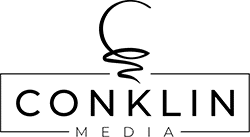It is important to familiarize yourself with the importance of quality scores when running Google Ads. This will help increase your search impression share on the keywords you’re bidding on and lower the cost per click when a user clicks on your ads. Multiple factors go into increasing quality scores, and there are several different ways to achieve a high quality score.
Most people are aware of Google Ads’ individual keyword Quality Score, which is the visible keyword-level Quality Score that you can see within Google Ads. What many people fail to recognize, however, is that there’s more going on than meets the eye.
You can try to fix a Quality Score problem with only the keyword level Quality score within the Google Ads interface, but you will often find it is hard to increase them past 2/10 or 3/10 with just adding your keywords to your Ad headlines. Much more goes into quality scores, and solving the problem may necessitate a little research on your part. This article will assist you in understanding the many types of Google Quality Score, why they’re critical, and what people think about them. It will also give you a checklist of things to do to increase your Quality Score.
The Different Types of Quality Scores
Account-Level Quality Score
Let’s start with the Account Level Quality Score. This represents the account’s historical performance for all keywords and ads. Google doesn’t acknowledge the existence of this Quality Score, but advertisers know that there are different levels of Quality Score beyond the visible keyword-level Quality Score.
When you run ads for keywords with low quality scores, they will often result in low click-through rates. This will factor into your account level quality score. Suppose you’re running several campaigns with multiple ad groups within each campaign and the majority of them have keywords with low quality scores, low click-through rates, and poor performance. In that case, this will hurt your account’s overall quality score. Although Google will not tell you your account’s overall quality score, it will keep a record of it within their system.
We may also discuss Google’s bias for older accounts versus new ones here, as the Account-level Quality Score is the sum of all account qualities. A long-established and successful account will outperform a new one.
This process can take months for an account with poor performance to show improvement after efforts have been made to enhance Quality Score, and it may be tempting to start fresh with a new account. However, this is against Google Ads policy, so you must “start over” within the current account by restaffing and following keyword, ad, and landing page relevance.
Ad Group Quality Score
Quality scores at the ad group level are relatively simple to calculate. Look at all the keywords you’re bidding on within each ad group and average out all of your quality scores. You’ll find some ad groups have a higher average quality score while some are lacking. This will show you where you need to focus on quality score improvement. Your lower average quality score ad groups need to be improved to achieve a better return on your ad spend.
You can restructure ad groups to achieve higher quality scores. Try removing keywords from Ad groups that are not relevant or similar to the types of keywords you’re bidding on within the given ad group. For example, if you create PPC ads for different color shoes, you will not want to have “red shoes” and “blue shoes” within the same ad groups. You want to be granular with your Ad Groups to ensure higher quality scores.
Each ad group has its own sets of ads. If somebody searches for “blue shoes” and then an ad appears for red shoes, they are most likely not going to click through on this ad because it is less relevant to their search. Yes, the ad is still talking about shoes, but if the ad were specific to blue shoes, the user would be much more likely to click the ad and view the content if it is relevant to what they’re looking for. Give the searcher a relevant ad to what they are searching for, and then send them to a page that continues to be relevant.
Keyword Quality Score
Keyword quality score is the only visible quality score within the Google Ads interface. This is where all your quality scores stem from. A keyword’s Quality Score is calculated on a 1 to 10 scale, with 1 being irrelevant and 10 highly relevant. Your keyword’s Quality Score is determined by how well search queries that exactly match your term perform. As a result, regardless of whether you use broad or exact match types, your Quality Score will be the same for a keyword.
If the keywords you’re bidding on are not relevant to what you’re offering, they will most likely not have a very high quality score. However, sometimes you may receive a low quality score even when the keywords you’re bidding on are completely relevant to what you’re offering. This can be due to multiple different factors.
The ads you’re running need to be in line with the keywords you’re bidding on. Going back to ad group level quality score, you need to be granular with your ad groups. DO NOT create a single ad group within your campaigns that holds all the keywords you want to bid on.
Segment out the keywords you’re bidding on into different ad groups and tailor your ads to the keywords you’re bidding on. You can even create what we marketers call a SKAG (Single Keyword Ad Group), which contains one keyword in either an exact phrase or broad match type. Or you can include all three match types of the same keyword within this ad group to test out which performs the best. This is a good option when trying to raise quality scores.
When reviewing keyword Quality Scores in your ad groups, you can view the following;
- Quality Score – How relevant the keyword, ads and landing pages are to those viewing an ad.
- Ad Relevance – How relevant the ads are to the keywords that you’re bidding on.
- Landing Page Experience – The landing page’s usefulness to visitors is measured by how likely they are to convert after visiting the page.
- Expected CTR – The probability that an ad will be clicked after it is displayed based on historical data.
- Quality Score (historic) – The last known quality score within the given time frame.
- Ad Relevance (historic) – The most recent ad relevance in the reporting time span.
- Landing page Experience (historic) – The most recent landing page experience score in the reporting timeframe.
- Expected CTR (historic) – The previous anticipated click-through rate in the reporting timeframe.
Here are some recommendations to increase search impression share, clicks, and conversions:
- Analyze search impression share data. The percentage of times Google showed your ads out of the total available impressions for which they were eligible to appear is reported as a percentage and is referred to as Impression share. If your impression share is low, you can improve performance by increasing your daily budgets or boosting bids to rank in higher positions.
- Try using more broad match keywords over phrase and exact match. Using only phrase and exact match keywords will often result in slow impression growth and cause Google to take longer to give a quality score to your keywords. This makes it harder to know how your keywords are performing in a shorter time. It’s recommended to pause ad groups or keywords with the lowest click-through rates and allow those with higher CTRs to serve.
For campaigns whose keywords have received significant impressions, look to click-through rates and conversion rates to measure performance. If keyword CTR is low and so is the ad CTR (less than 1.5%) then this is an indicator that users are not finding the ad relevant to their query. If your conversion rates are low on top of a low CTR then this is a huge indicator that your ad copy and your landing pages are not relevant to their search queries.
Google’s system will take longer to determine the quality score of your keywords if this issue is present. Google wants users to find what they are searching for on Google, so it makes sense that Google would not want low CTR advertisers getting impressions all day long when people are literally scrolling right past their ads. This is why keyword Quality Score drastically impacts your Google Ads.









